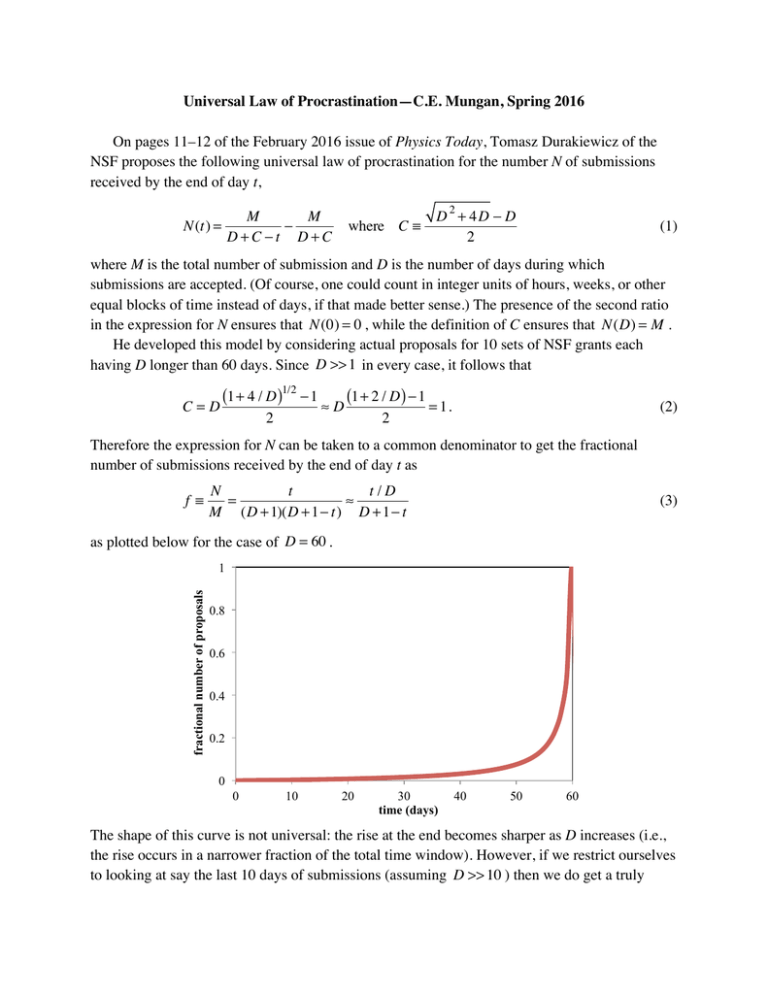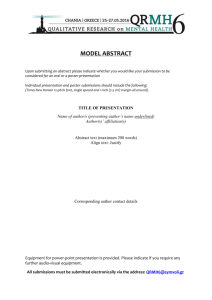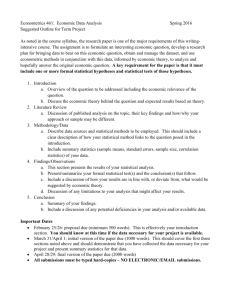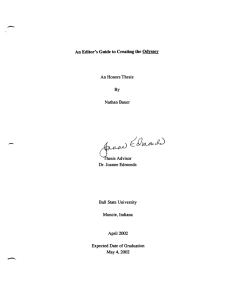Universal Law of Procrastination—C.E. Mungan, Spring 2016 Physics Today N
advertisement

Universal Law of Procrastination—C.E. Mungan, Spring 2016 On pages 11–12 of the February 2016 issue of Physics Today, Tomasz Durakiewicz of the NSF proposes the following universal law of procrastination for the number N of submissions received by the end of day t, N(t) = M M − D+C−t D+C where C ≡ 2 D + 4D − D 2 (1) where M is the total number of submission and D is the number of days during which submissions are accepted. (Of course, one could count in integer units of hours, weeks, or other equal blocks of time instead of days, if that made better sense.) The presence of the second ratio in the expression for N ensures that N(0) = 0 , while the definition of C ensures that N(D) = M . He developed this model by considering actual proposals for 10 sets of NSF grants each having D longer than 60 days. Since D >> 1 in every case, it follows that 1/2 1+ 4 / D ) − 1 ( (1+ 2 / D ) − 1 = 1 . C=D ≈D 2 (2) 2 Therefore the expression for N can be taken to a common denominator to get the fractional number of submissions received by the end of day t as f≡ N t t/D = ≈ M (D + 1)(D + 1− t) D + 1− t (3) as plotted below for the case of D = 60 . fractional number of proposals 1 0.8 0.6 0.4 0.2 0 0 10 20 30 time (days) 40 50 60 The shape of this curve is not universal: the rise at the end becomes sharper as D increases (i.e., the rise occurs in a narrower fraction of the total time window). However, if we restrict ourselves to looking at say the last 10 days of submissions (assuming D >> 10 ) then we do get a truly universal curve (i.e., approximately independent of everything except time). Defining T = t − D + 10 so that T = 1 to 10 counts the last 10 days of the window, and approximating the numerator of Eq. (3) by unity during those final days, then f≈ 1 11− T for T = 1 to 10 (4) as tabulated below. end of day# out of the 10 last days percentage of submissions received 1 10% 9 50% 10 100% That is, the number of submissions on the last day is approximately equal to the total number of submissions received on all preceding days. Equation (4) is a simple hyperbolic function, in contrast to the modified hyperbolic of the preceding forms of this equation.







